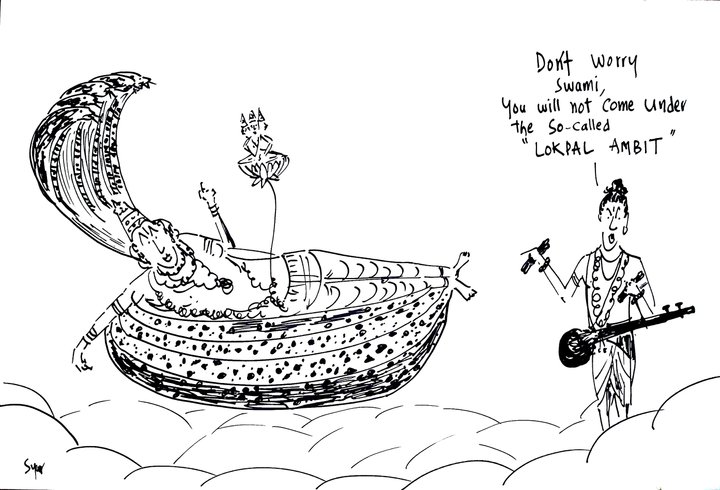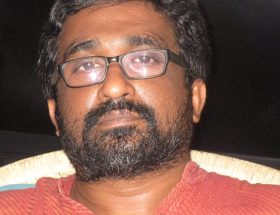Anu Ramdas
The Jan Lokpal bill is under 35 pages. The creators of this document successfully manufactured a ‘revolution’ out of this. The corporate media sold it as such, and some academics called it a ‘movement’.
Media and academia largely did not comment on the contents of the document. Their preoccupation was with the leaders on the dais and the people on the Ramlila grounds.
In a caste ordered, rigidly patriarchal society like ours, exclusion of dalitbahujan men and women is the default status when socio-political changes are framed by upper-caste, male-dominated power groups, such as Kejriwal’s team. Unless contested, this group of unelected civil society actors will not concede their male and caste privileges. Hence all their formulations have to be meticulously examined for their apparent and hidden biases against women and non-dominant castes.

The existing power differential between the upper caste males and others, makes it imperative that tremendous hard work be done to turn around any issue to start reflecting a pro-women and pro-dalitbahujan essence.
It is very interesting to track how the current ‘movement’ is brilliantly attempting to push under the carpet the main structural reasons that enable corruption in India: brahmanism and patriarchy.
For now, let me separate the ‘movement’ from the ‘document’ and highlight a few points about the implied meanings of both for women and dalitbahujan.
Ramlila maidan production: The ‘movement’
To me, the leaders on the dais appeared particularly non-charismatic, their oratory capacity was non-existent, their immediate message, obscure. Their highly televised antics seemed to attempt a rather sad but earnest reproduction of dashaavtaram– the epochal interventions to decimate evil forces in the Indian mythos. The show came complete with the fasting of an old sage, to perhaps yet again save the fair devas from the immoral dark asuras (?). The rapidly concentrated moral sanctity of the 12 day penance was presumed to naturally grant the leaders a divine boon, a modern version of Sudarshan chakra, the Jan lokpal bill.
When have we failed to become a captive audience consuming these myths? Oral, live, film, televised or animated versions of these recycled stories have an unfailing magnetism that draws people to them. Rest assured, should the organizers think of taking their production on a road show, the dense peopling of Ramlila grounds will be repeated over and over again in all parts of the country (high rents? No problem, audiences will pay for the shows).
Don’t misread me here, I am neither dissing the myths nor this ‘moral revolution’. Far from it, I am from the school of anti-caste philosophy, which has devoted a significant part of its intellectual resources in assessing the epics of the dominant castes and their intrinsic power to oppress the marginalized. We are heirs to a long line of thinkers, poets, writers and reformers who have consistently deconstructed Hindu myths and the way they manifest themselves in everyday actions, big and small. I partly agree with the observation ‘the imprint of future worlds lies firmly embedded in the epics of the past‘. But, it is to the anti-caste intellectuals that we owe our understanding that mass mediated myths and epics are almost always the crucible of anxieties, fears, feel goods and victories of the dominant classes. No other mythos has come under such powerful scrutiny by the members of the oppressed, this heritage allowed the dalitbahujan to see through the symbolism of the Ramlila anti-corruption ‘movement’ and self-select themselves out of being the audience for the latest production at Delhi. This spontaneous and collective political act of distancing from the ‘movement’ by the dalitbahujan people is a massive and silent honor to our intellectual predecessors and traditions for having equipped us with the tools of critical thinking that walled education adroitly avoided.
Anti-caste perspectives analyze the socio-psychological messages in myth imposition along the simultaneously intersecting oppressions of gender, caste and class. And like the African and Francophone discourses on internal colonization it concerns itself with the multidimensional interrogation of domination of the mental universe of the oppressed. Morality defined and demanded by the re-enactment of Hindu myths has the power to cripple our imagination, effectively redirect us from our struggles for equality and paralyze us in status quo power relations between the oppressor and the oppressed, men and women, the master and slave.
For us, the Ramlila grounds production is a barely disguised version of the older versions of the Hindu myths, the theme almost comically remains the same: male Brahmincal forces having to arm themselves against the morally corrupt non-brahmins.
From this very Uncle Pai narrative, we have to perform two tasks: determine the evil and the evil doer. Kejriwal’s gaggle of civil society actors have already proclaimed themselves as the good guys in this moral battle. In other words, we have to extract from the bill, what these self appointed leaders mean by corruption and who might be the corrupt?
Hence, sometime back, I set aside time to read the Jan Lokpal Bill_ver-2.3-1 to locate for myself the mug-shot of the corrupt and his business enterprise without the distracting dramatics of the ‘movement’.
Jan Lokpal Bill: The document
The document is problematic from page one. The introduction is a selective copy paste of the UN Conventions Against Corruption (UNCAC) to which India is a signatory. Thus giving the appearance that the Jan Lokpal bill (JLB) was conceptualized around the UNCAC.
I would think, by now, we have learned a little bit about following universal agendas of world bodies while micro managing human behavior. When small elite groups make decisions for the whole of humanity, universal definitions and guidelines have very little appeal for the marginalized. In the JLB, I looked harder for an organic elucidation of corruption. As the ‘movement’ has been hammering into our consciousness that the JLB version alone has perfectly aligned the nuts and bolts of the most powerful tool to combat corruption, and even minor tweaking of its contents, is sacrilege.
And this is what I found on page 2, “Corruption always involves misconduct and gives rise to grievances. These are inter-related.” This vague sentence is meant to encompass the description of the evil called corruption, in the introduction of this document.
The JLB hardly makes a reference to the Indian society, its history and economic realities that may have led to the current ‘crisis’ of corruption. A single quote from the N.N Vohra committee report (1993) is the only point that anchors this document to the Indian context. “The nexus between the criminal gangs, police, bureaucracy and politicians has come out clearly in various parts of the country. The existing criminal justice system, which was essentially designed to deal with the 2 individual offences/crimes, is unable to deal with the activities of the Mafia; the provisions of law in regard economic offences are weak….The various crime Syndicates/Mafia organisations have developed significant muscle and money power and established linkages with governmental functionaries, political leaders and others to be able to operate with impunity”. (Please note this quote talks about criminal gangs and the mafia.)
Rest of the JLB deals with the lokpal committee, selection of its members, functions and powers.
In essence, the document does not define, describe or concern itself with the phenomenon of corruption in the context of the Indian society.
Please the read the second part of this article here.
Cartoon by Unnamati Syama Sundar.










